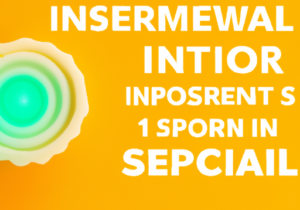Summary
In a sea of positive messages, negative news tends to stand out more and capture attention. This is due to negativity bias, a psychological phenomenon where people are more likely to notice, react, and be influenced by negative information. It is important for sales and marketing experts to understand and use this bias to their advantage in their marketing strategies.
Key Points
1. Implications of Negativity Bias for Marketers
2. Balancing Negative Positivity
3. The Power of Emotions in Marketing
4. The Role of Trust
Detailed Analysis
Implications of Negativity Bias for Marketers
People are inevitably drawn to negative stimuli more than the positive ones. Hence, it is critical for marketing experts to create content that stands out amongst positivity-laden messages. Marketing and sales experts can use the negativity bias to draw more attention to their campaigns. According to Harvard Business Review, “Negativity bias could be a valuable tool for marketers… Calls to action that communicate negative consequences may be more effective than those communicating benefits.” It’s critical, however, to understand the audience’s perceptions and reactions to varying degrees of negativity.
Balancing Negative Positivity
While using negativity might draw attention, marketers should be careful about damaging their brand’s image. Balance is key, involving a strategic interplay between negative and positive messaging. Whilst using negativity can help marketers in capturing attention, overusing it can lead to damaging the brand’s reputation and perception. Balance is key – while negative messaging can provoke a reaction, the use of positive affirmations and optimistic messaging can also have a positive impact on consumer behavior.
The Power of Emotions in Marketing
Given that negativity bias is tied to heightened emotions, marketers should consider leveraging emotions in their advertising strategy to catch audiences’ attention. As negativity bias is largely driven by emotional reactions, marketers can leverage emotions to inform their advertising strategy. Stirring emotions such as fear or joy can instantly catch the audience’s attention and make the marketing message more memorable.
The Role of Trust
Despite the utility of negative stimuli in attracting attention, trusting relationships between consumers and brands continue to be paramount. Thus, marketers must ensure that their strategies, while possibly leveraging negativity bias, foster consumer trust. Even though negative stimuli can capture attention, developing a trusting relationship with consumers remains key for long-term success. Any marketing strategy that relies on exploiting negativity bias should still aim to build and maintain consumer trust.
The “Signals Hot Take”
In the fast-paced digital age, it’s more important than ever for sales and marketing experts to capture the attention of potential consumers. Signals, an AI marketing tool, provides these professionals with insights into website visitors and their digital behaviors, highlighting what content draws their attention and triggers their engagement. By identifying these patterns, sales and marketing teams can harness the power of negativity bias in more defined, precise ways without jeopardizing the brand’s reputation. Ultimately, Signals aids in enhancing customer conversion strategies by enabling a deep, nuanced understanding of consumer behavior.
Full article can be found here: Full Article
READ MORE
Start seeing your Buyers' signals
Signals is helping companies automate, grow, and close sales pipeline with industry-leading predictive intent scoring, lead generation, and real-time engagement.






















